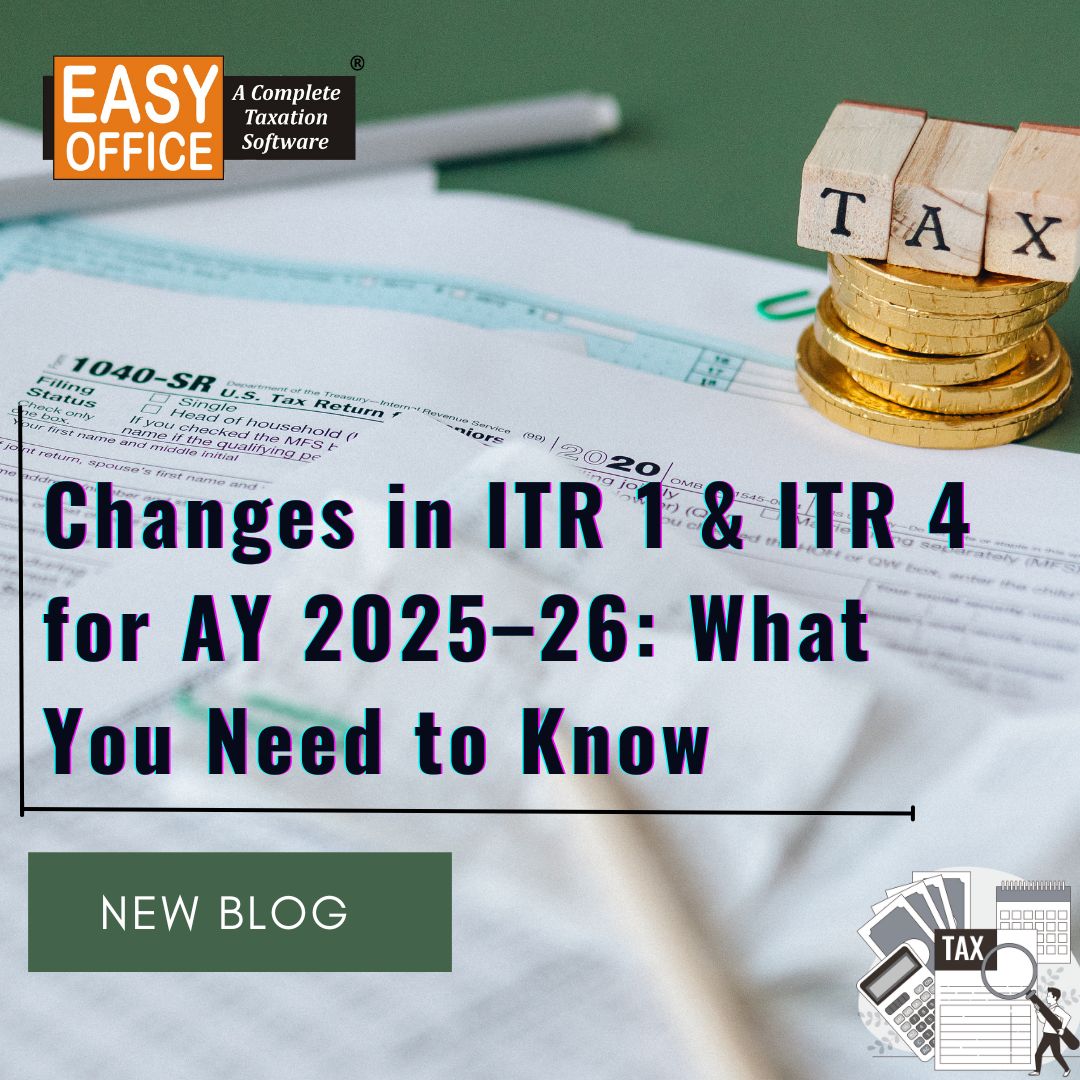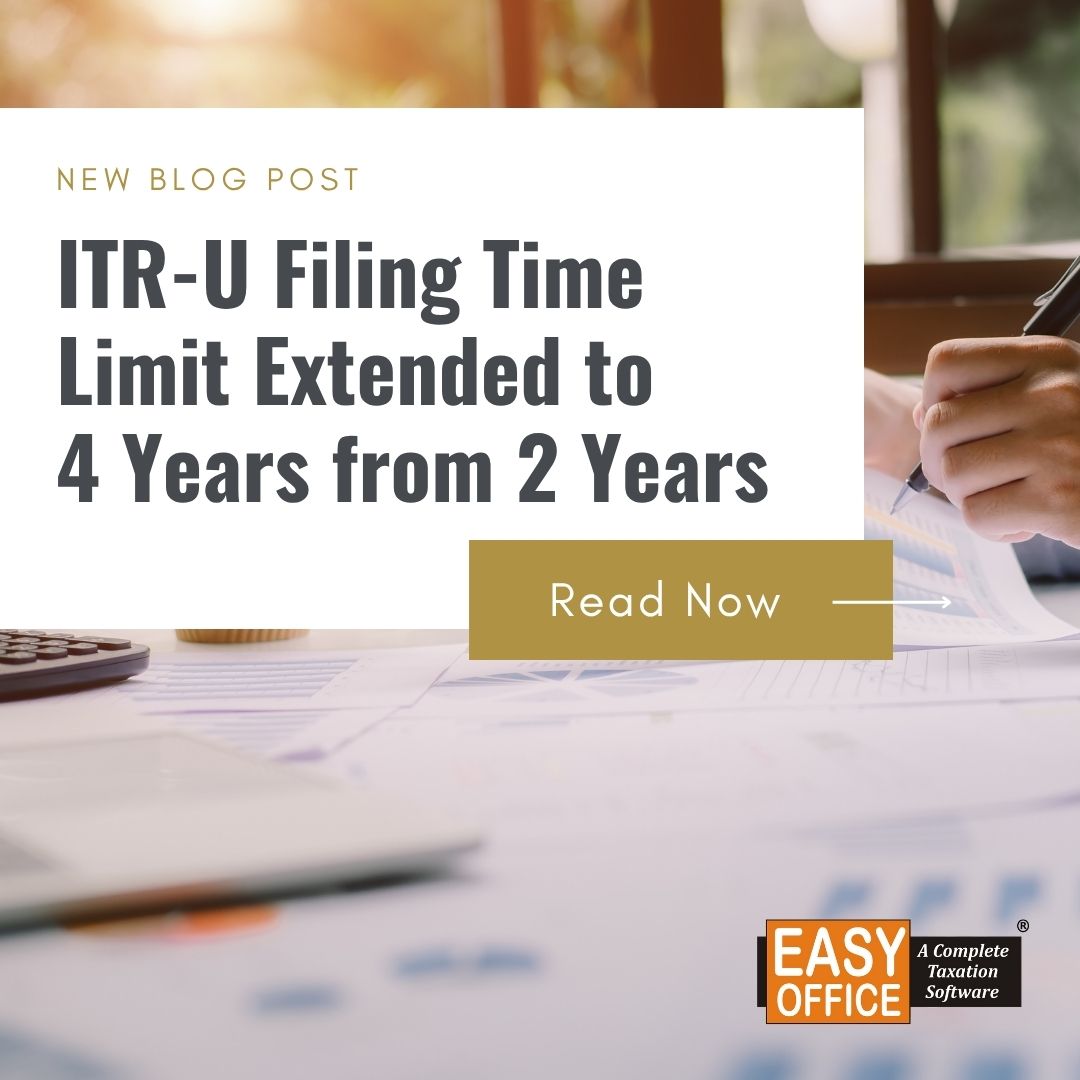Major Income Tax Changes for AY 2025-26

Income Tax Updates for AY 2025-26
The 2024 Union Budget has rolled out notable changes to the income tax framework for Assessment Year (AY) 2025-26, focusing on simplifying tax compliance and enhancing transparency for taxpayers. The new tax regime is now the default choice for individual taxpayers, promoting a more straightforward system with reduced complications. However, taxpayers retain the flexibility to opt for the old tax regime if it results in better tax savings through available deductions and exemptions.
1. Changes in Income Tax Slabs and Rates
New Tax Regime Slabs FY 2024-25 (AY 2025-26) vs FY 2023-24 (AY 2024-25)
| New Tax Regime Slab Rates FY 24-25 (AY 25-26) | New Tax Regime Slab Rates FY 23-24 (AY 24-25) | ||
|---|---|---|---|
| Annual Income (₹) | Tax Rate | Annual Income (₹) | Tax Rate |
| Up to ₹3,00,000 | Nil | Up to ₹3,00,000 | Nil |
| ₹3,00,001 - ₹7,00,000 | 5% | ₹3,00,001 - ₹6,00,000 | 5% |
| ₹7,00,001 - ₹10,00,000 | 10% | ₹6,00,001 - ₹9,00,000 | 10% |
| ₹10,00,001 - ₹12,00,000 | 15% | ₹9,00,001 - ₹12,00,000 | 15% |
| ₹12,00,001 - ₹15,00,000 | 20% | ₹12,00,001 - ₹15,00,000 | 20% |
| Above ₹15,00,000 | 30% | Above ₹15,00,000 | 30% |
The new tax regime slab rates for AY 2025-26 (FY 2024-25) offer a smoother transition between slabs, particularly for incomes between ₹6,00,000 and ₹7,00,000, and ₹7,00,000 to ₹9,00,000, where the earlier rates had a higher impact.
Old Tax Regime Slabs for FY 2024-25 (AY 2025-26)
Under the old tax regime, the tax slabs differ by age group and provide additional benefits for senior and super senior citizens.
For Individual Taxpayers Below 60 Years, HUF, BOI, AOP
| Income Tax Slab | Rate of Income Tax |
|---|---|
| Up to ₹ 2,50,000 | Nil |
| From ₹ 2,50,001 to ₹ 5,00,000 | 5% above ₹ 2,50,000 |
| From ₹ 5,00,001 to ₹ 10,00,000 | ₹ 12,500 + 20% above ₹ 5,00,000 |
| Above ₹ 10,00,000 | ₹ 112,500 + 30% above ₹ 10,00,000 |
For Senior Citizen Taxpayers Aged Between 60-80 Years
| Income Tax Slab | Rate of Income Tax |
|---|---|
| Up to ₹ 3,00,000 | Nil |
| From ₹ 3,00,001 to ₹ 5,00,000 | 5% above ₹ 3,00,000 |
| From ₹ 5,00,001 to ₹ 10,00,000 | ₹ 10,000 + 20% above ₹ 5,00,000 |
| Above ₹ 10,00,000 | ₹ 110,000 + 30% above ₹ 10,00,000 |
For Super Senior Citizen Taxpayers Aged Over 80 Years
| Income Tax Slab | Rate of Income Tax |
|---|---|
| Up to ₹ 5,00,000 | Nil |
| From ₹ 5,00,001 to ₹ 10,00,000 | 20% above ₹ 5,00,000 |
| Above ₹ 10,00,000 | ₹ 100,000 + 30% above ₹ 10,00,000 |
2. Other Salient Facts for AY 2025-26
- 🔹Old regime: Section 87A provides a rebate of ₹12,500 for persons earning income up to ₹5 lakh.
- 🔹New regime: A similar rebate of ₹25,000 is available on taxable income of up to ₹7 lakh with marginal relief benefit.
(a) Standard Deduction
Up to Assessment Year 2025-2026, the standard deduction has been raised to ₹75,000 for salaried persons under new tax regime and it remains ₹50,000 for old tax regime. This increases the amount of tax-shielded Income without additional investment.
(b) Surcharge
Surcharge for incomes above ₹50 lakhs has remained the same for both regimes. However, in the new tax regime, the surcharge has been capped at 25%, in contrast to 37% in the old regime for income exceeding five crores.
(c) Tax Rebates to Resident Individuals
3. Capital Gains Tax Updates
The capital gains tax structure for AY 2025-26 has undergone significant changes in July Union Budget effective from July 23, 2024, affecting both long-term and short-term capital gains. These changes aim to simplify the taxation process and create a more equitable system for taxpayers. Here’s a detailed breakdown of the key changes:
- 🔹Listed Securities: Assets such as equity shares, equity-oriented mutual funds, and units of business trusts listed in India are now considered long-term if held for more than 12 months.
- 🔹Other Assets: All other asset classes, including unlisted shares, debt-oriented mutual funds, real estate, and gold, are classified as long-term if held for more than 24 months.
- 🔹Paying tax at 20% with indexation benefits, or
- 🔹Paying tax at 12.5% without indexation.
(a) Simplified Holding Periods
The criteria for determining whether an asset qualifies as a long-term or short-term capital asset have been revamped:
This simplification removes the complexities of the previous system, which required different holding periods for various asset classes.
(b) Revised Tax Rates
Long-Term Capital Gains (LTCG): A uniform tax rate of 12.5% is now applicable across all asset classes. Particularly, the indexation benefit, which adjusted the purchase price of an asset for inflation, has been withdrawn for most assets. However, for land and/or buildings acquired before July 23, 2024, taxpayers have the option to choose between:
Short-Term Capital Gains (STCG): The tax rate on short-term capital gains from listed equity shares and equity-oriented mutual funds has been increased from 15% to 20%. This change aims to align the taxation of short-term gains with other income sources.
Summary
Both provisions (new and old) have some kind of advantage. The new tax regime simplifies the process by removing the deductions and exemptions while the old one may be beneficial to those availing of substantial deductions or exemptions. With capital gains tax reforms and capped surcharge rates, strategic tax planning is essential. To simplify your tax calculations and ensure accurate filing, consider using a trusted income tax return software designed to handle the latest regulations effortlessly. Make tax filing quick and stress-free with the right income tax return software at your fingertips.
Frequently Asked Questions (FAQs)
1. What is the default tax regime for AY 2025-26? The new tax regime is now the default option for individual taxpayers. However, you can still choose the old tax regime if it offers better tax-saving benefits
2. What is the standard deduction for AY 2025-26? Under the new tax regime, the standard deduction has been increased to ₹75,000 for salaried individuals, while it remains ₹50,000 under the old tax regime.
3. Has the surcharge rate changed for high-income earners? Yes, under the new tax regime, the maximum surcharge rate has been capped at 25% for income above ₹5 crores, compared to 37% in the old regime.
4. What are the new capital gains tax rates for AY 2025-26?Long-term capital gains are now taxed at a uniform rate of 12.5% without indexation. For land and buildings acquired before July 23, 2024, taxpayers can choose between 12.5% without indexation or 20% with indexation. Short-term capital gains on listed equity shares and equity-oriented mutual funds are taxed at 20%.
5. Can I switch between the new and old tax regimes every year? Yes, individual taxpayers without business income can switch between the new and old tax regimes annually, depending on which option provides better tax savings.
File Your ITR with EasyOffice →











